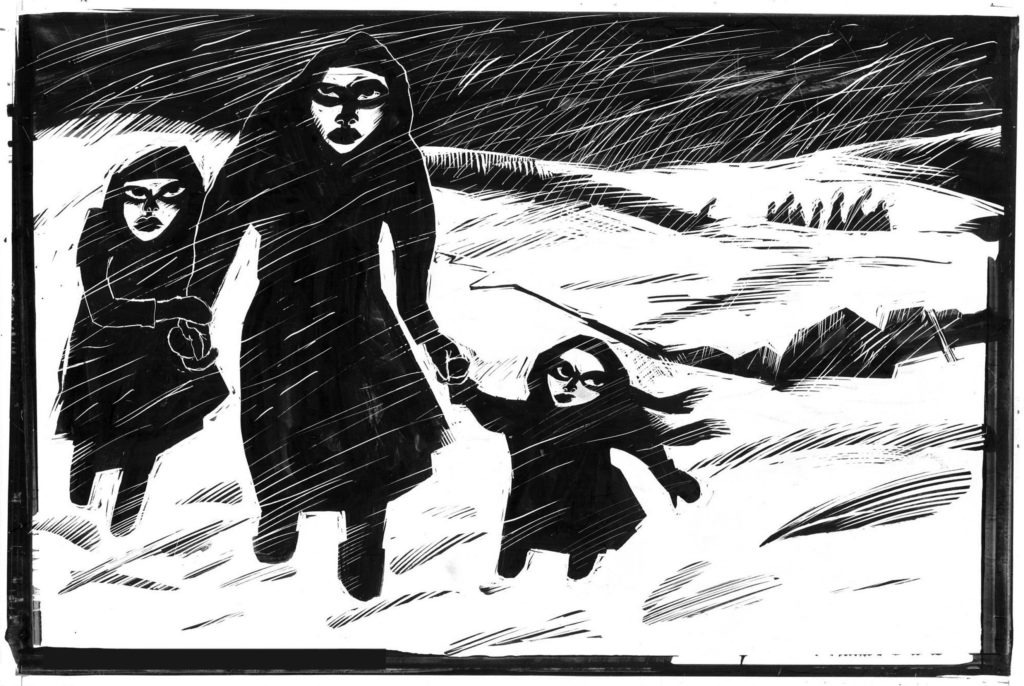by YáSNAYA ELENA AGUILAR GIL

I write from Ayutla, a Mixe community in the northern mountains of Oaxaca, which is facing the coronavirus pandemic without access to drinking water. As we talk, think, and share ideas about what we can do in this situation, and the need to speak out about the emergency circumstances we’re in, I can’t help but think of other epidemics that have shaped the way our communities have been configured through history. The epidemics of the Sixteenth Century had a determining influence in the way that the colonial order was installed in these lands in the centuries that followed.
The colony was established on a great demographic catastrophe, between the wars of conquest, the forced labor, the abuses and the illnesses. According to the calculations of John K. Chance, the author of the classic Conquest of the Sierra: Spaniards and Indians in Colonial Oaxaca, the Mixe did not return to our estimated population in 1519 until the decade of 1970. The stories and records of the impacts of smallpox and other imported illnesses in the native population are formidable, there were entire villages in which it became impossible to bury all of the dead.
The effects of epidemics on a population already exposed to war and forced labor dramatically reduced the native population. Specialists estimate that during the first great smallpox epidemic, eight million people died over a period of approximately two years. In a more conservative estimate (the numbers are still debated), 15 million people lived in these lands, and by the outset of the seventeenth century, there were but two million. In any case, it is impossible to deny that epidemics, along with war and subjugation, were a fundamental factor in the process we call the conquest.
After the Sixteenth Century and through time, Indigenous people have faced additional epidemics. In oral tradition, tradition that lives in memory, elders from my community tell stories of those years: houses left deserted after the death of their occupants, daily fear, the anguish of not being able to carry out fundamental and necessary rituals so that the dead could set out on their voyage, these were the characteristics of an illness known in Mixe as jëën pä’äm, which translates as “the illness of fire” because of the high fevers that it caused, but which has yet to be fully identified.
The last words of my great-great-grandfather before he died from jëën pä’äm were passed on to me through intergenerational telling, his last words before entering in that state that is a bridge between consciousness and nothingness, made a reference to a quintessential story: in his childhood, he had been told of a great epidemic that devastated the whole region, and to avoid infection a family decided to take all of the corn and food they could and flee to a place where the illness couldn’t reach them.
Later I read in Edgar Allan Poe’s extraordinary tale The Masque of the Red Death that something similar happened to that family that didn’t worry about the epidemic and ate the food that they took outside the community. As is to be expected, the illness traveled with them, and no one could help them after death interrupted their enjoyment of that which they stole. Nobody could bury them and their bodies were left in the open and dried up in the sun.
Toward Freedom for more